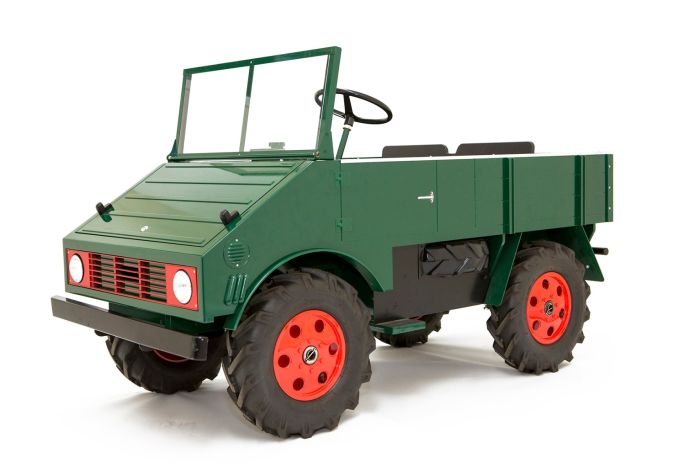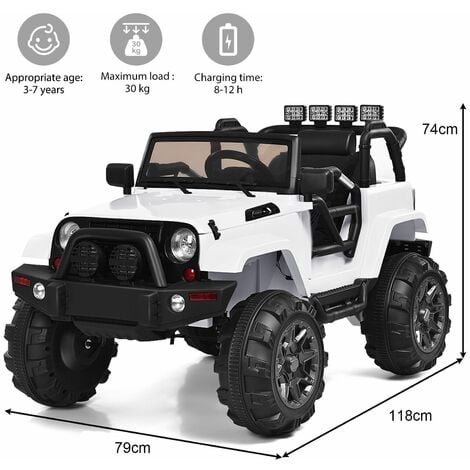Great Suggestions On Deciding On Electric Kids Cars
What Should I Know About Battery Life & Charging Time For An Electric Kid's Car?Understanding the battery and charging time of an electric kid's ride-on car is essential to ensuring optimal performance and uninterrupted playing time. This is all you need to be aware of about the battery type.
The majority of electric ride-on cars for kids are powered by rechargeable batteries. They could be lead-acid or lithium-ion. The lead-acid batteries take longer time to charge and have lower battery lifespan.
Capacity of Battery
The battery capacity, measured in ampere-hours (Ah) or watt-hours (Wh) is the measure of how long the ride-on car can operate on a single charge. Batteries with higher capacity provide longer playtime between recharges.
Run Time -
The time it takes to run an electric ride-on vehicle refers to how long it can run continuously on one charge. It is based on a variety of factors that include the motor, the battery, the terrain, and the weight of the rider.
For electric cars typically, the run time is between 30 and 2 hours on a single battery charge. Some high-capacity battery packs may provide longer run times.
Time to Charge
The charging duration is how long it takes the battery to fully recharge once it has been exhausted. The charging time may differ depending on the battery's capacity or specifications for the charger.
The charging duration of electric ride-on vehicles is between 8 and 12 hours. Certain models can charge faster particularly those with lithium-ion batteries.
Follow the charging guidelines that are provided by the manufacturer in order to ensure safety of the battery and long-term durability. The battery's performance and its lifespan could be affected negatively by either overcharging it or undercharging it.
Charge Methods -
Electric ride-on cars usually include a charger that plugs into a regular household outlet. Some models can have fast-charging capabilities or include an intelligent charger that monitors the battery's charge status and adjusts the charging speed in line with the state of charge.
Make sure whether the chargers and connectors on the ports on ride-on cars are compatible in order to prevent damage to either the battery or the electrical components.
Additional Batteries
Certain electric vehicles provide the option of buying additional batteries or batteries to prolong the playtime. Having extra batteries on hand lets you switch out batteries that are depleted for fully charged ones, minimizing interruptions between play sessions.
If you are aware of the charging duration and battery life of an electric kids' car and your child will be able to enjoy endless fun and adventures. Battery life can be maximized by charging the battery frequently and using proper charging techniques. Take a look at the recommended kids ride on cars for more recommendations including electric car ride, electric two seater cars, kids electric cars, remote control childrens electric cars, car electric ride on, ride on toy, two seater childrens electric cars, childrens electric ride on, ride a toy, toy and car and more. .

What Are The Best Models For Kids Cars? Designed For Outdoor And Indoor Use?
The cars for children have specific features and characteristics that are suited to different settings and use situations, whether indoors or outdoors. The indoor Use Cars are distinct.
Dimension and weight Cars designed for indoor use tend to be smaller and lighter, allowing them to maneuver more easily within tight spaces like living rooms, hallways or playrooms. They can navigate through narrow spaces and tight passages with ease.
Low Ground Clarity Vehicles in indoor environments have low clearances so that they don't get stuck, or snagged, on obstacles, such as carpets, rugs or thresholds. This guarantees smooth and uninterrupted movement across indoor surfaces without risk of becoming stuck or falling over.
Smooth Wheels - The wheels of indoor use cars are often made of smooth materials like rubber or plastic to give traction and grit on smooth surfaces like hardwood flooring, laminate flooring or tiles. They are designed to minimize noise and prevent scratching or scuffing indoor surfaces.
Limited Speed - When it comes to indoor use, vehicles typically have slower speeds than they would be to ensure that they can be safe and controlled in narrow space. This can prevent accidents or collisions that could happen with furniture, wall, or any other obstacle found inside.
Outdoor Use Cars -
Durable Construction: Cars built for outdoor use have durable materials like hard plastic or steel which can withstand the rough handling, elements of the outdoors such as humidity and sun. They are less susceptible to wear and tear caused by exposure to outdoor conditions.
Higher Ground Clearance - Outdoor use vehicles have greater ground clearance to navigate uneven terrain, bumps, or other obstacles that are encountered outside. This allows them to traverse rough surfaces like gravel, pavement dirt, grass, or even dirt without getting stuck or harmed.
Traction Tires - The tires on outdoor use cars are often fitted with patterns or treads to provide better grip and traction on uneven or slippery surfaces. This ensures stability and control over surfaces outdoors, preventing sliding or skidding.
Weather Resistance. Outdoor vehicles are usually equipped with weather-proof components such as sealed electronics, waterproof casings and rust-resistant material. This protects them from environmental damage. The car can be exposed to mud, rain and puddles with no loss of performance.
Higher Speeds - Cars designed for outdoor use usually have greater top speeds to accommodate wide spaces and the longer distances found outdoors. This could provide an thrilling and exciting riding experience for children that are out in the open.
With these design traits and other features, parents may pick a child's vehicle that is best suited to their specific usage needs and the environment that they intend to use it, whether inside or out. Parents can ensure that your child's safety, fun, and lasting experience. Follow the best discover more for Mercedes ride on car for website recommendations including 2 seater electric cars, race car toy car, race car toy, childrens ride on, car for toy, car toy car toy, ride electric car, remote control childrens electric cars, toy car, electric ride on cars and more. .

What Kind Of Children's Remote-Controlled Cars Are There? What Are Their Pros And Cons?
Remote control children's cars Also known as RC cars or remote-controlled cars are available in a variety of dimensions and styles. They also come in a variety of price ranges to suit various budgets and preferences. Here's a list of the different kinds of remote-controlled cars for kids, with their dimensions, prices as well as pros and cons.
Electric RC Cars – Batterie-powered remote-controlled vehicles that can be used for both outdoor and indoor use. There are many different designs of RC vehicles including trucks, buggies and sportscars.
Nitro RC Cars - Gas-powered remote-controlled vehicles that provide more speed and performance, but require more maintenance and knowledge to run. They are typically larger and cost more than electric RC vehicles.
Scale Models (Remote-controlled replicas) Miniatures of real-life vehicles like airplanes, trucks or automobiles. Scale Models are available in a variety of scales which range from 1-10 all the way to 1-24. Larger scales give more detail and realistic appearance.
Sizes -
Remote-controlled children's car models are available in a variety of dimensions. They range from small microsized replicas up to large-scale replicas. The size of the car will influence the performance, speed and braking characteristics.
Micro-sized cars are light and compact. They're perfect for younger children and indoor use. Larger-scale models offer greater power and durability and are ideal for off-road and outdoor driving.
Prices
The cost of remote-controlled cars for children vary based on factors such as dimensions, features, brands, and quality of construction.
The price of micro-sized electric RC vehicles can vary between $20 and $100. However larger-scale electric or nitro RC models can range between $100 and $500.
Scale models, premium hobby RCs may cost between several hundred dollars up to a whopping $1,000, depending on the level of detail and performance.
Pros and Pros and
Pros -
Remote Control Cars for Children - These vehicles are fantastic to entertain your children. They are able to be enjoyed by adults as well as children.
The operation of an R/C vehicle helps children develop spatial awareness, problem-solving and hand-eye cooperation.
Social Interaction. Cars with RC encourage social interaction and be enjoyed by family and friends. families.
Customization - Many RC vehicles can be customised by using accessories, aftermarket components, upgrades and accessories to enhance performance and appearance.
Cons
Cost - A remote-controlled vehicle for children that has advanced features or hobby model cars can cost a lot.
Learning Curve - Operating an RC car requires practice and skill. Children who are younger may be unable to manage the controls.
Maintenance: All RC vehicles require regular maintenance that includes cleaning regularly, oiling, and replacing parts or repairs.
Safety Concerns – RC safety of cars can be affected through electrical hazards, collisions, and other dangers when the vehicles aren't controlled and used with caution from an adult.
Children of all ages will enjoy remote control cars. However, it is important to think about factors such as price, size and safety before deciding on the most suitable model. The hobby-grade RC vehicles may be better for older kids or enthusiasts. The simpler models are ideal for children who are just beginning their journey. Have a look at the most popular McLaren kids car for blog info including toy with car, two seater childrens electric cars, childs ride on car, remote control childrens electric cars, ride on car, toy car, car on ride, kids electric cars, ride ons, electric two seater cars and more. .
